Marketing Email vs. Transactional Email: What’s the Difference?
Time to read:
Marketing Email vs. Transactional Email: What’s the Difference?
The biggest question we get from potential and existing customers alike is, “What’s the difference between marketing email and transactional email?”
There are a few ways to answer this question:
- Content and purpose: A transactional email contains information about an action the recipient has already taken, while a marketing email intends to drive the recipient toward an action you want them to take.
- Multiple ways to send email: With Twilio SendGrid, there are multiple ways to send email, including web API, SMTP relay, or through our email marketing service. Many customers choose to send both marketing and transactional emails through SMTP relay or web API, while others choose our email marketing platform to create campaigns, upload sending lists, create templates, and send.
- Internet protocol (IP) address: Many businesses that send high volumes of email choose to send transactional emails and marketing emails from separate IP addresses. The primary reason is that marketing emails tend to have a much lower engagement rate, which can impact deliverability. You don’t want this to slow down transactional emails or risk them landing in the spam folder.
Whether you’re sending a newsletter, coupon, promotion, password reset, account update, or any other email communication, we can help you get those messages delivered. But first, let’s dig deeper into the differences between marketing and transactional emails and examples of each type.
What is a transactional email?
Transactional emails (aka triggered emails) are triggered by a user’s interaction with a web app (e.g., a purchase receipt). Businesses often send transactional emails through SMTP relay or programmatically through one of our APIs.
Unlike marketing emails, which are bulk distributions aimed at promotional activities, transactional emails are personalized and sent to individuals following specific actions or behaviors on a web application or website. These actions can range from completing a purchase to resetting a password, and each action triggers an automatic email response relevant to the activity performed.
Characteristics of transactional emails
- Triggered by user actions: Transactional emails are sent in response to specific actions taken by users. This can include making a purchase, creating an account, requesting information, or any number of other interactive behaviors with a service or application.
- Personal and immediate: These emails are highly personalized, containing information directly related to the user's action. They are sent immediately after the action is taken to ensure timely communication that is relevant and expected by the recipient.
- Critical information: Transactional emails often carry important information that the recipient needs or expects. This includes order confirmations, shipping notifications, account changes alerts, and service availability updates, among others.
- Enhancing customer experience: By providing immediate, relevant information, transactional emails play a significant role in enhancing the overall customer experience. They reassure customers that their actions have been successful and provide them with next steps or additional resources.
How to send transactional emails
SMTP Relay: Some businesses choose to send transactional emails using an SMTP (Simple Mail Transfer Protocol) relay service. This traditional email sending method involves routing emails through a server designed for outgoing mail, offering reliability and scalability for high volumes of email.
APIs: Alternatively, transactional emails can be sent programmatically through APIs (Application Programming Interfaces), allowing for more customization and integration with web applications. This method enables businesses to automate email sending based on user interactions within their apps or websites, tailoring the timing and content of emails for optimal relevance and engagement.
Transactional email examples
Let’s look at some of the most common types of transactional emails and the elements included to enhance the user experience. (You can find templates for all these email types on our transactional emails page.)
Purchase confirmation or receipt
Customers expect a timely purchase confirmation after doing business with you. There are a few key elements these emails should include:
- Order confirmation numbers
- Purchase details (e.g., items purchased, total amount, and billing and shipping address)
- Call-to-action or CTA buttons (to track the package or check the status of the order)
- Additional links (to the cancellation policy, return policy, or other frequent customer questions)
- Business contact information
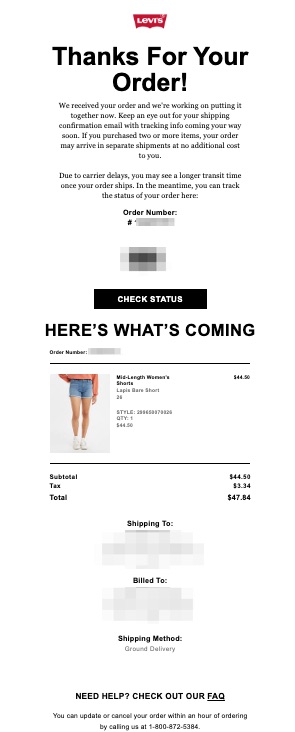
Request for feedback
After a customer receives their purchase, many businesses follow up with a request for a review. While requesting reviews is a marketing tactic, this type of email is transactional because it ties to a purchase and a customer’s action triggers it. These emails often include:
- A direct link to a review platform
- An incentive for submitting a review (like entering into a drawing)
- A link to the terms and conditions (to stay compliant with local guidelines for drawings)
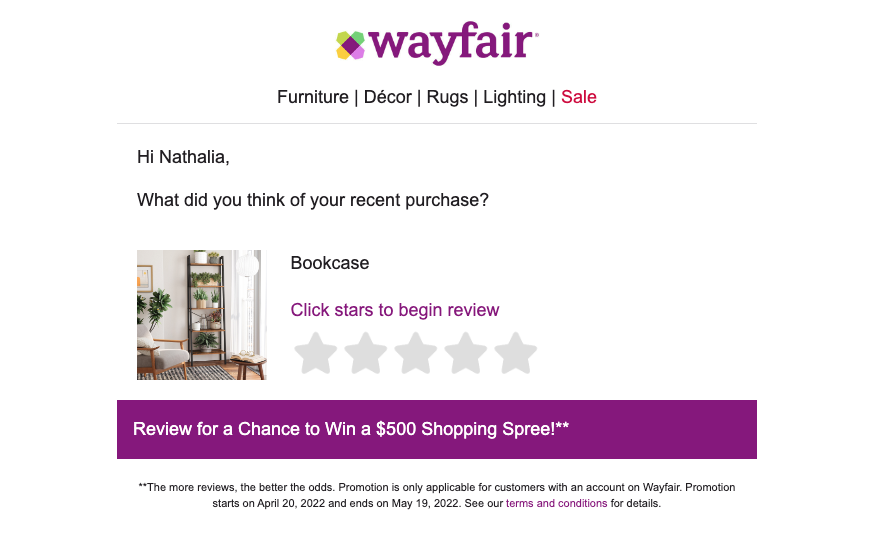
Identity verification
It’s an email marketing best practice to implement a double opt-in method when users sign up for your email campaigns. When the user submits their email on a sign-up form, a double opt-in triggers a verification email that serves a double purpose. First, it verifies that they entered their email address correctly. And second, it asks the recipient to confirm that they indeed meant to sign up for your email list. These emails should include:
- An eye-catching CTA button (that confirms the recipients’ intent to sign up)
- An unsubscribe link
- The business’ contact information
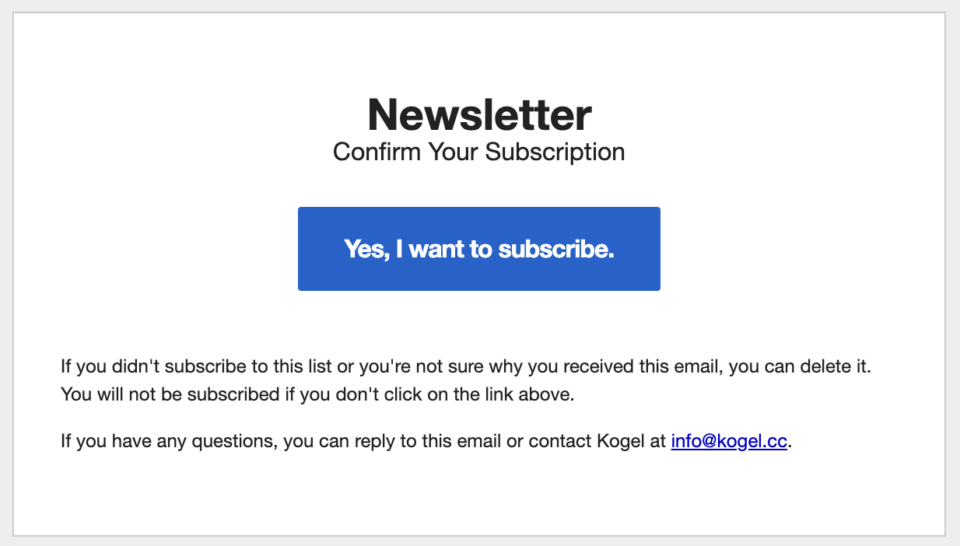
Password reset
We’ve all been there—it’s been a long time since you’ve signed into a certain account, and you just can’t remember the password, so you enter your email address and select Forgot my password. This triggers an email with a unique, time-bound link to a password reset page. These emails should contain:
- Recipient’s name
- Eye-catching CTAs that take the recipient to the password reset page
- Explanations of how long the link will be valid
- Branded elements (such as a logo and brand colors) that quickly identify this as a legitimate email from your business
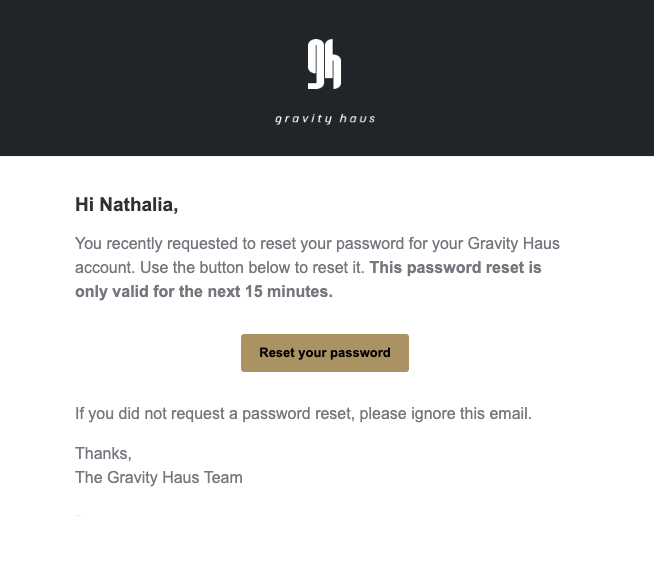
Account notifications
This category includes a wide range of emails that notify users of important activity on their account or other information that impacts them. These emails help build trust in your brand by keeping users informed, alerting them to any potential fraudulent activity, and giving them easy access to any actions they need to take. Some examples include:
- Security alerts notifying the user of a sign-in to their account from a new device
- Policy changes
- Monthly statements from financial institutions or payment applications
- Account reminders (e.g., a trial period ending)
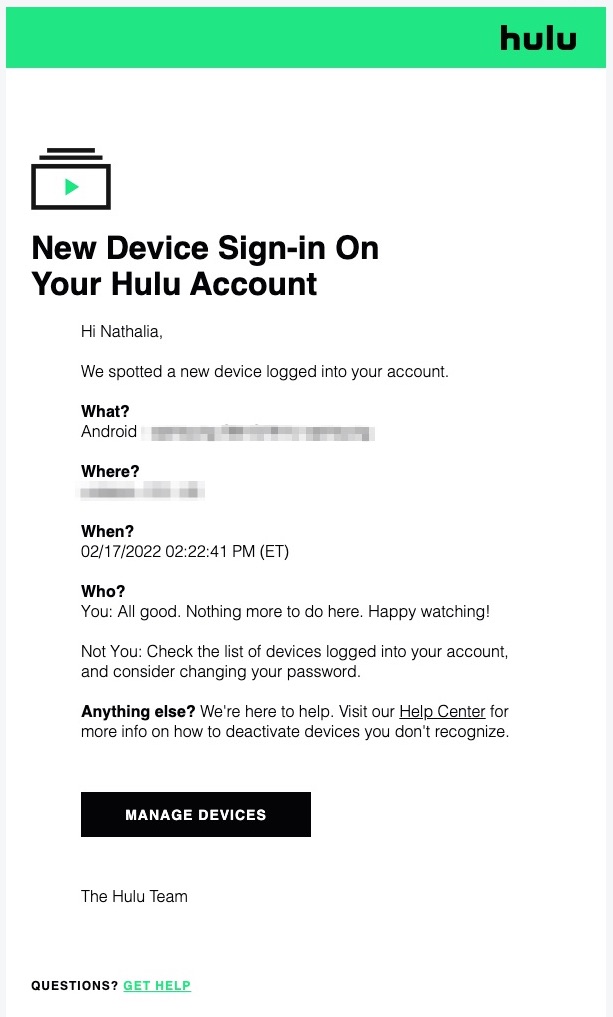
Depending on the purpose, transactional emails should include:
- Clear explanations of why the user is receiving this email
- Plainly stated actions that the user should take (or if they don’t need to do anything, this should also be clear)
- Contact information the recipient should use to reach the business if they didn’t initiate the action that triggered the email
Account creation
These emails are triggered when a user creates an account with your business. While technically transactional emails because the recipient’s action triggers them, the content of these emails tends to include a little marketing. That’s why businesses take different approaches to welcome emails depending on the goals and brand identity. These emails typically include:
- Welcome messages or thank yous for joining the mailing list, loyalty program, or community
- Information on what the business offers and the benefits of joining the community
- One or more CTAs leading the recipient to learn more, start shopping, follow the business on social media, etc.

What is a marketing email?
Unlike transactional emails triggered and sent programmatically, businesses strategically time and send marketing emails to a recipient list with a specific goal. The purpose is typically commercial—thus, the laws that regulate marketing emails don’t apply to transactional emails.
As we mentioned earlier, a major difference lies in how you send marketing emails. You can send marketing emails with an SMTP relay or web API, but it’s preferable to use a comprehensive email marketing solution like Twilio SendGrid’s Marketing Campaigns for these communications. This allows you to:
- Build templates and content within the email editor
- Track metrics to measure performance (e.g., opens and clicks)
- Perform A/B testing on different message templates
- Segment recipient lists to target specific customers
- Schedule sends
Marketing email examples
Promotions and sales
You’re likely very familiar with promotional emails. These emails aim to get the recipient to take an action such as making a purchase or downloading a new white paper.
Brands are typically highly intentional about the design of promotional emails, using eye-catching graphics and content that will encourage the reader to act. The most effective promotional emails are often short and sweet. The main elements are:
- Engaging imagery that showcases the product
- Prominent CTA buttons
- Minimal text
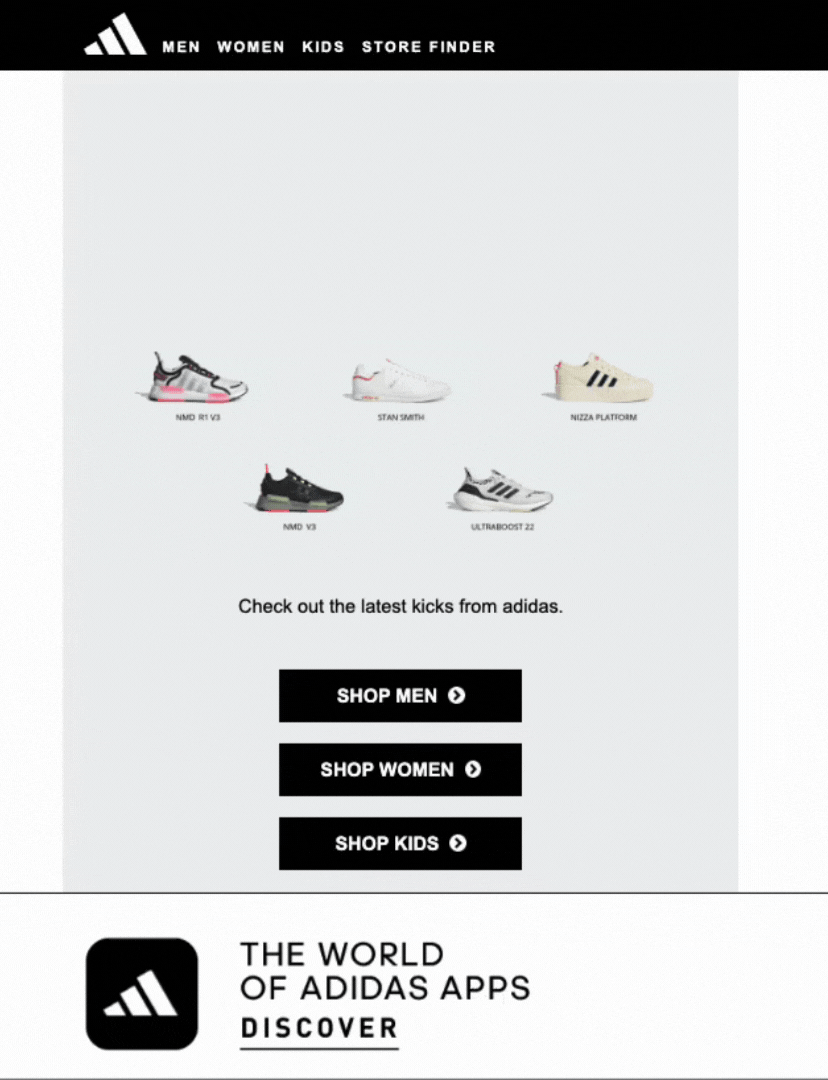
Newsletters
Since the purpose is to build a relationship with the recipient and maintain brand awareness, newsletters are typically more subtle in terms of marketing goals. Because of this, newsletters have more content than promotional emails and multiple CTAs linking to articles and other resources. Your newsletters need to have valuable content for the reader if you want to keep them on your subscription list. This typically includes:
- Engaging hero images
- Smaller images and pieces of content
- Multiple CTAs

Send marketing and transactional emails with Twilio SendGrid
While transactional and marketing emails have different goals and strategies, you still need to integrate both types. This means that both types of emails share branding, messaging, and voice. Learn more about how SendGrid can help deliver your messages, no matter what kind of content you’re sending, by downloading the Marketing and Transactional Email Guide.
Whether you’re looking for an email marketing platform or an API to send transactional emails (or both), SendGrid has you covered. Try it for free today to see how you can take your email strategy to the next level.
Related Posts
Related Resources
Twilio Docs
From APIs to SDKs to sample apps
API reference documentation, SDKs, helper libraries, quickstarts, and tutorials for your language and platform.
Resource Center
The latest ebooks, industry reports, and webinars
Learn from customer engagement experts to improve your own communication.
Ahoy
Twilio's developer community hub
Best practices, code samples, and inspiration to build communications and digital engagement experiences.


